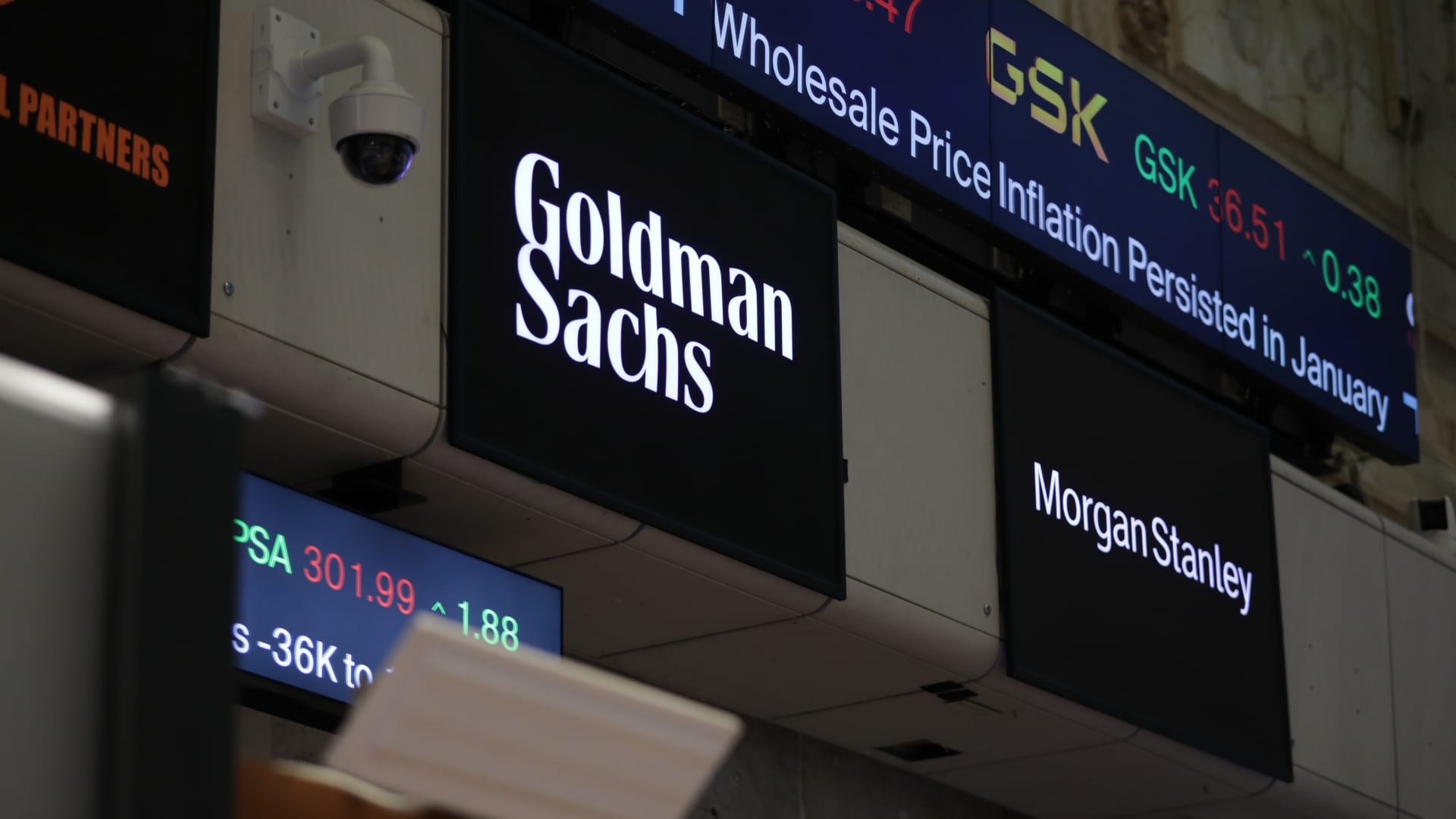With the Federal Reserve expected to resume its rate-cutting cycle on Wednesday, investors may start looking for new income opportunities in dividend-paying stocks. The market is pricing in 100% odds that the central bank decreases rates at its meeting, with the majority expecting a 25 basis point — or 0.25 percentage point — cut, according to the CME FedWatch tool . As a result, yields on cash instruments like money markets and short-term bonds should start to come down. Bond yields move inversely to prices. Falling bond yields generally make dividend payouts look relatively more attractive. Dividends are also a good way to stay invested through any uncertainty, according to Morgan Stanley. “In periods of elevated risks and valuations, dividends become [a] more important part of investors’ total returns, dampening volatility and providing some support to stock prices,” strategist Todd Castagno wrote in an Aug. 14 note. “Slower growth and a declining interest rate environment also make durable, higher yielding dividends relatively more attractive as cash and fixed income become less lucrative.” Still, investors shouldn’t focus merely on stocks with the highest dividends since elevated yields can be a sign of distress within the company. Instead, many focus on dividend growth. Morgan Stanley’s research has found that six months after companies announce a dividend raise, their stocks outperformed by an average 3.1%, Castagno noted. Investing in dividend aristocrats is one way to ensure you are getting dividend growers, since the index is composed of S & P 500 companies that have boosted payouts in each of the past 25 years. The exchange-traded fund that tracks the performance of that index is ProShares S & P 500 Dividend Aristocrats ETF . NOBL YTD mountain ProShares S & P 500 Dividend Aristocrats ETF year to date The ETF has a 2.46% dividend yield and an expense ratio of 0.35%. In contrast, the S & P 500 yields. 1.12%. The fund’s top holdings include C.H. Robinson Worldwide , Lowe’s and AbbVie . Not just ‘aristocrats’ Still, there are dividend stocks that may not meet the index’s strict 25-year criteria of dividend growth that are still a buy, several investors told CNBC. “For us, that’s a little old,” Jack Ablin, chief investment strategist at Cresset, said of the 25-year standard. For instance, Apple wouldn’t qualify, he noted, since it reinstated its dividend in 2012. Ablin focuses on dividend growers, albeit with a shorter track record than dividend aristocrats, that are also high-quality companies. “These are companies that have had a long track record of maintaining and growing their dividends over time,” he said. “Historically, if their payout ratio stays roughly constant, then earnings typically outpace inflation.” Not only does Ablin look at cash-flow generation when choosing stocks, he considers leverage ratios, which measures the extent to which a company uses debt to finance its business. “We are looking at adequate liquidity and then companies that are in … less cyclical businesses as well, with reasonable profit margins,” he noted. “We want companies to be able to sustain themselves through recessions and expansions alike.” Examples include names like Chubb and Cardinal Health , he said. The former has a 1.41% dividend yield and is down 1.7% year to date, while the latter yields 1.36% and is up 26% so far this year. CAH YTD mountain Cardinal Health year to date Capital appreciation also matters Investors also shouldn’t lose sight of potential capital appreciation. Kevin Simpson, founder and chief executive officer of Capital Wealth Planning, focuses on dividend-growth stocks in his clients’ portfolios and generally prefers a five-year history of payout increases. “If you take that a little bit further, and you think that the dividends are growing because their earnings are increasing, then generally speaking, you should see share price appreciation at some point if you’re investing in a company that’s increasing its earnings,” he added. Dividend growers also tend to be leaders in their subsectors, having demonstrated capital discipline in terms of reinvesting in their business and generating stockholder payouts, said Matt Quinlan, portfolio manager at Franklin Templeton. He’s co-lead manager of the Franklin Rising Dividends Fund . “Those are attributes that should help a company realize capital appreciation over time,” he said. “At the same time, companies that can grow their dividends or have an attractive dividend profile also tend to be more resilient and that helps provide downside capture and tougher markets.” FRDPX YTD mountain Franklin Rising Dividends Fund year to date. Financial stocks Quinlan sees opportunities within the financial sector these days. For one, banks that have business in capital markets are benefiting from an increase in activity, he said. Financials will also benefit from deregulation and a pick up in business activity that should come from rate decreases, he noted. Plus, consumer spending is resilient, he added. “We’re also seeing some really good dividend growth,” Quinlan said, pointing to hikes over the summer in response to passing the Fed’s stress tests. “That’s because they’re growing and they’ve got a strong capital basis.” The Franklin Rising Dividends Fund holdings include Morgan Stanley and Charles Schwab . Morgan Stanley yields 2.55% and has gained 24% year to date. Charles Schwab has a 1.17% dividend yield and has climbed 23% so far this year. MS YTD mountain Morgan Stanley year to date Simpson’s top picks Simpson also likes some financial names, including JPMorgan and Goldman Sachs . Both stocks have already done well and should continue to do so “because there is such profitability,” said Simpson. JPMorgan has a 1.81% dividend yield and is up 29% so far this year, while Goldman yields 2.03% and has gained 37% year to date. Home Depot , which has a dividend yield of 2.18%, is also an attractive opportunity, Simpson said. HD YTD mountain Home Depot year to date Not only does it have strong dividend growth, it should be a big beneficiary of lower rates, he noted. “The residential homeowner may look at lower rates for HELOCs [home equity lines of credit] so that they can do things that maybe they haven’t done since the pandemic — floor coverings, appliances, additions,” he said. Plus, the home improvement store has a strong business on the commercial side, which should benefit in a pickup from professional real estate investors upgrading properties, he said. Shares of Home Depot have risen more than 8% year to date. (Learn the best 2026 strategies from inside the NYSE with Josh Brown and others at CNBC PRO Live. Tickets and info here .)





